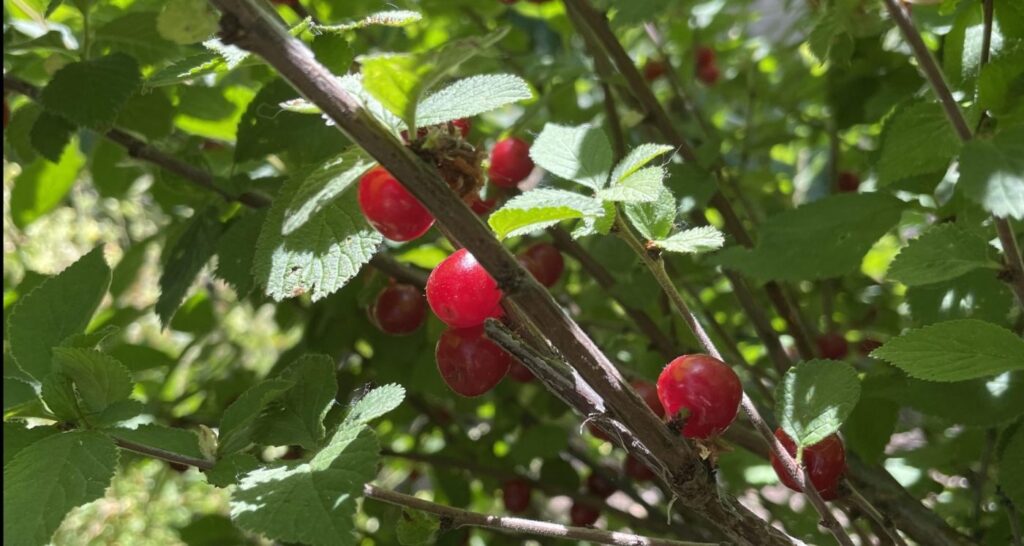
Southern California is often called a gardener’s paradise because we can grow an amazing variety of plants. It’s warm enough to grow many tropical and subtropical fruits such as citrus, avocado, guava, sapote, cherimoya, and mango. The inland valleys encompass a surprising range of microclimates in which some temperate fruits can survive (or even thrive) if planted in a spot that offers adequate winter chill.
Cherries require more winter chill than most other temperate fruits, so they do not grow well in most of Southern California (Cherry Valley being an exception). If you plant a Bing cherry here, it may survive for a year or two, but it will produce little or no fruit and eventually decline due to inadequate chill – kind of like the tree version of sleep deprivation.
If you still want to grow cherries because of their beauty and don’t mind getting tart fruit, there are some varieties that will do well in our warm climate.
Nanking Bush Cherry (Prunus tomentosa) is native to China and is very hardy here. It can be grown as a small tree (to 15 feet tall) or trimmed into an attractive hedge. It flowers profusely in the early spring and, when more than one is planted, they produce ½-inch bright red fruit that is quite tart. It is somewhat drought-tolerant and can make an adequate wind break. Because we only have two, and the fruit is so small, we haven’t been able to try it in any recipes. It is fun to pop one in your mouth and get a little tart blast of flavor, and it’s healthier than those sour candies my kids are so fond of.
For a larger specimen tree that is also beautiful (even without fruit) and fast-growing, consider a Capulin cherry (Prunus salicifolia). Native to southern Mexico and Guatemala, this tree has a weeping habit and can reach 50 feet in height with a 15-foot spread. It can be grown in full sun or partial shade and can take winter temperatures down to 20F. Without cross-pollination, it produces beautiful clusters of ¾-inch red fruit that is tart and somewhat astringent. Grow it for the beauty, not the fruit.
For the adventurous gardener who wants to try growing cherries for jams, jellies, or pies, try sour cherry varieties such as English Morello. We have a tree that gives us about a dozen cherries every year, but you may have better luck.
If you are looking for a flowering cherry, there are some California natives that will provide a spring show as well as food for native insects and birds. Hollyleaf cherry and Catalina cherry are two varieties that are well-adapted to coastal regions but should grow well in some inland areas with milder winters.
As always, your results may vary.
For more information on how to select a tree for your property, go to www.selectree.calpoly.edu.
Looking for more gardening tips? Here’s how to contact the Master Gardener program in your area.
Los Angeles County
mglosangeleshelpline@ucdavis.edu; 626-586-1988; http://celosangeles.ucanr.edu/UC_Master_Gardener_Program/
Orange County
ucceocmghotline@ucanr.edu; 949-809-9760; http://mgorange.ucanr.edu/
Riverside County
anrmgriverside@ucanr.edu; 951-683-6491 ext. 231; https://ucanr.edu/sites/RiversideMG/
San Bernardino County
mgsanbern@ucanr.edu; 909-387-2182; http://mgsb.ucanr.edu/
Related Articles
Can you afford to buy a house? Try this price calculator
How to create a comfortable space at home for your fitness and workout routine
Why this hardy, low-water groundcover might be your green grass alternative
Birdscaping, fertilizing and drought-tolerant plants: 5 things to do in the garden
How to choose the best landscape tree for your home or garden
